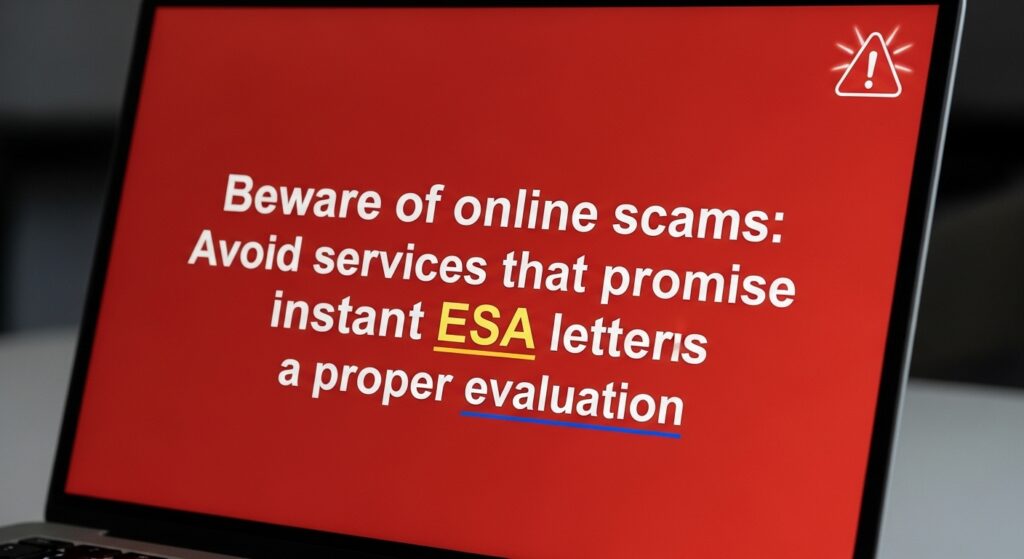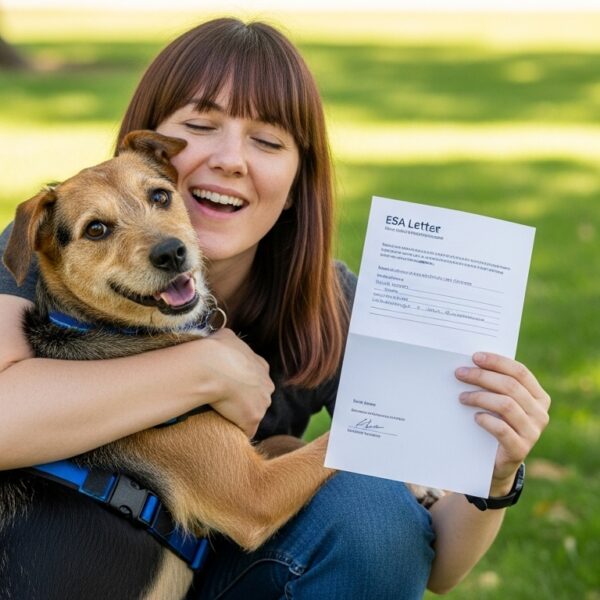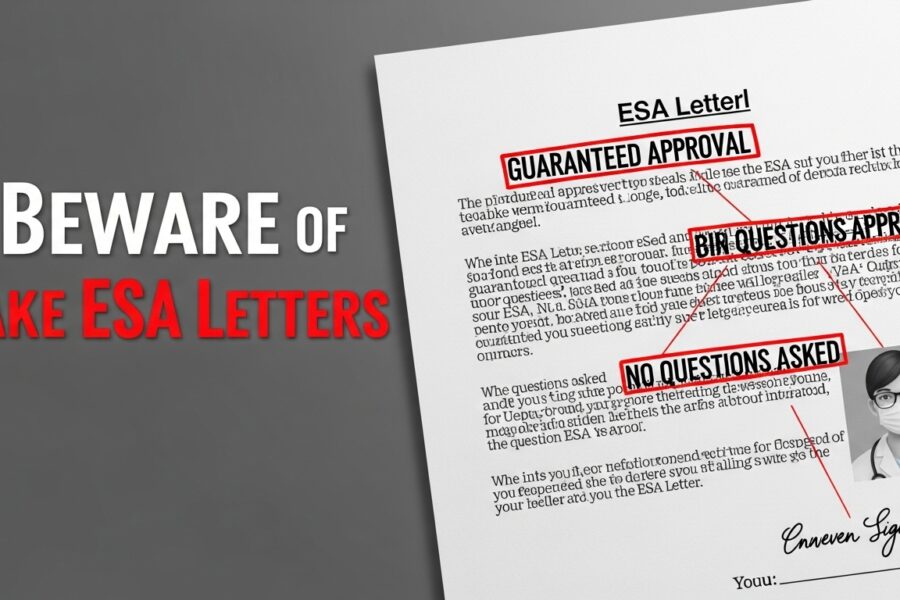An emotional support animal (ESA) is more than just a pet — it provides therapeutic support, comfort, and companionship to individuals coping with mental health challenges.

What Is an Emotional Support Animal? Everything You Need to Know
Table of Contents
An emotional support animal (ESA) is more than just a pet — it provides therapeutic support, comfort, and companionship to individuals coping with mental health challenges.
Whether you’re considering getting an ESA or just curious about how they help, this guide offers everything you need to know to make an informed decision.
What Is an Emotional Support Animal?
An emotional support animal is a companion animal prescribed by a licensed mental health professional to help a person manage conditions like anxiety, depression, PTSD, or other emotional or psychological disorders.
Unlike service animals trained for specific tasks, emotional support animals are not required to have special training. Their main job? Simply being there.

Emotional Support Animal vs. Service Animal vs. Therapy Animal
It’s important to distinguish between these terms, as they serve different roles:
Emotional Support Animal (ESA)
- Offers emotional comfort
- Requires a letter from a licensed therapist
- Protected under Fair Housing Act (FHA)
Service Animal
- Trained to perform specific tasks
- Protected under ADA (Americans with Disabilities Act)
- Typically only dogs or miniature horses
Therapy Animal
- Works in hospitals, schools, or care homes
- Offers comfort to groups, not one specific person
- Not covered under ADA or FHA
Who Qualifies for an Emotional Support Animal?
To qualify for an emotional support animal, you must have a diagnosable emotional or psychological condition. These include but are not limited to:
- Generalized anxiety disorder
- Major depressive disorder
- Panic disorder
- PTSD
- Bipolar disorder
A licensed mental health professional (LMHP) must evaluate your condition and issue an ESA letter, which legally recognizes your need for an ESA.
How to Get an Emotional Support Animal
Step 1: Speak with a Licensed Mental Health Professional
This can be a psychologist, psychiatrist, licensed therapist, or clinical social worker. You’ll need to discuss your symptoms and how an ESA may help you.

Step 2: Obtain an ESA Letter
The ESA letter must include:
- Official letterhead of the LMHP
- Date of issuance
- Statement confirming your need for an ESA
- LMHP’s license number and signature
Step 3: Choose the Right Animal
Although dogs and cats are the most common emotional support animals, almost any domesticated animal can serve as an ESA — rabbits, birds, even miniature pigs.

Legal Rights of Emotional Support Animal Owners
Housing Rights
Under the Fair Housing Act (FHA), landlords must make reasonable accommodations for tenants with ESAs, even in “no-pet” policies. They cannot:
- Charge pet fees for an ESA
- Deny housing solely because of the ESA
Travel Rights
As of 2021, the Air Carrier Access Act (ACAA) no longer requires airlines to accommodate ESAs as they do service animals. Most airlines treat ESAs as pets, subject to pet policies.
Benefits of Having an Emotional Support Animal
The emotional and psychological benefits of ESAs are backed by research and personal stories:
- Reduced anxiety and stress
- Improved emotional regulation
- Enhanced social interaction
- Lower levels of loneliness and depression
- Consistent daily routine and responsibility

Frequently Asked Questions About Emotional Support Animals
1. What qualifies as an emotional support animal?
Any domesticated animal that provides emotional or mental comfort through companionship may qualify, provided you have a valid ESA letter.
2. How do I register an emotional support animal?
Technically, there is no federal registry for emotional support animals. What you need is a valid ESA letter from a licensed mental health professional.
3. Can landlords deny an emotional support animal?
Under the Fair Housing Act, landlords must accommodate tenants with valid ESA documentation unless the animal poses a direct threat or causes significant property damage.
4. Can I bring my emotional support animal on a plane?
Many airlines now treat ESAs as pets. Check with the airline’s pet policy in advance — most will no longer allow ESAs to fly free in the cabin.
5. Is there any special training required for an emotional support animal?
No, ESAs do not need special training, though basic obedience training is strongly recommended for comfort and control.
Final Thoughts
An emotional support animal can be life-changing for individuals struggling with emotional and mental health conditions. With the right documentation and care, your ESA can offer consistent, non-judgmental comfort that supports your healing journey.







Sign up